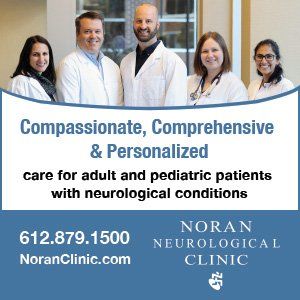nce upon a time, there was a wise man who used to go to the ocean to do his writing. He had a habit of walking on the beach before he began his work.
cover story two
The Mental Health Collaboration Hub
Getting to Yes!
By Todd Archbold, LSW, MBA
One day, as he was walking along the shore, he looked down the beach and saw a human figure moving like a dancer. He smiled to himself at the thought of someone who would dance to the day, and so he walked faster to catch up.
As he got closer, he noticed that the figure was that of a young girl, and that what she was doing was not dancing at all. The young girl was reaching down to the shore, picking up small objects, and throwing them into the ocean.
He came closer still and called out “Good morning! May I ask what it is that you are doing?”
The young girl paused, looked up, and replied “Throwing starfish into the ocean.”
“I must ask, then, why are you throwing starfish into the ocean?” asked the somewhat startled wise man.
To this, the young girl replied, “The sun is up, and the tide is going out. If I don’t throw them in, they’ll die.”
Upon hearing this, the wise man commented, “But, do you not realize that there are miles and miles of beach and there are starfish all along every mile? You can’t possibly make a difference!”
At this, the young girl bent down, picked up yet another starfish, and threw it into the ocean. As it met the water, she said, “It made a difference for that one.”
The “Star Thrower” tale above is adapted from a writing by Loren Eiseley in 1969. The contrast between futility and determination serves as the inspiration for those who work tirelessly every day, despite constant challenges, to help youth in psychiatric crisis.
The average boarding period is increasing, in some cases up to weeks or even months.
Every day in Minnesota dozens of youth present to hospitals and emergency departments in a psychiatric or behavioral health crisis. The number of youth in emergency departments in crisis has doubled in the last decade, overwhelming hospital staff and infrastructure that is designed for medical emergencies. Stories of youth boarded (stuck) on medical units, hallways and even parking garages have become more common as they have no place to go. The situations are intense, and services are scarce. The average boarding time is increasing as well, in some cases up to weeks or even months. This is a result of an underfunded and understaffed system of mental health care providers and human service systems.
Studies have consistently sounded alarms about inadequate funding for mental health and addictions care. When compared to reimbursement rates for general medical procedures, mental health ranks among the lowest, resulting in hospitals’ prioritizing access to more profitable services. The state’s Medicaid rate covers approximately 60% of the actual cost of providing mental health care. It took state law to require insurance plans to pay at least the Medicaid rate for mental health services (some paid less) and to include coverage for psychiatric residential treatment facilities, one of the most needed services that insurance companies had refused to cover (and at its core a blatant violation of parity). It is unconscionable that our government and insurance plans acknowledge this crisis yet do nothing to fund better access and sustainable services.
In response to this crisis, and in an effort to save more starfish, community stakeholders began to meet in August 2022 to address this problem. Months later the Mental Health Collaboration Hub (MHCH) launched statewide, in 2023, to help connect youth stuck in boarding situations get connected to safe living and mental health treatment environments. More than 150 organizations and over 350 individual users, including nurses, case managers, administrators and more, collaborate daily in the MHCH. Hospital staff enter de-identified case information into the MHCH, which then matches the cases with available treatment and support services. Without the MHCH, hospital staff are forced to randomly call numerous treatment centers, group homes, foster care systems and more, all around the state to find availability of the most appropriate placement or intervention. In order to find the right intervention, they must consider the patient’s age, psychiatric condition, special medical needs, guardianship, insurance coverage and more. These youth who are boarding actually represent a very small percentage of cases who present to hospital and emergency departments, but they require the most resources—including specialized interventions and robust ancillary services. The MHCH does all of this for the case worker, functioning as a care pathways marketplace. It matches cases to providers based upon the specific case criteria, and it even notifies the providers when there is a match. Case workers also participate in a weekly video call to share more detailed information on cases and provide consultation to one another.
Shared Goals
In the summer of 2022, providers across the state began to meet to talk about the boarding crisis. They represented the state’s largest hospitals, counties, mental health treatment centers, group homes and advocacy groups. They began identifying specific cases of youth who were boarding in inappropriate settings and tried to connect them to care. Most cases were boarding in hospitals and emergency departments, but some were boarding in county administration buildings and even hotels. The cases being discussed were among the most difficult to place. Many youths were in foster care or county custody, often lacking clear contacts for health care decision-making or coverage for services.
The provider group began meeting weekly and tracking their efforts in a secure SharePoint site. It became clear that there were paths forward, but it would require aligned goals, creativity and tenacity to break through barriers. They dubbed their efforts, “Getting to yes!” As each week passed, one or two kids were often able to get the necessary intervention and safe placement they needed. The efforts involved were extraordinary in terms of both the number of providers it took and the constant brainstorming. The process lacked efficiency.
The Minnesota Department of Health awarded the state’s largest psychiatric health system, PrairieCare, a Pediatric Mental Health Access Program grant through the Health Resources and Services Administration (HRSA). This funding allowed the provider group to build a secure online platform for centralized communication and automation. Thus, the Mental Health Collaboration Hub was born. The grant also helps to support administrative and technical support for the platform, as well as education and outreach. Any health provider or human services agency in the state can register its organization and build a profile to interact within the Hub.
Case Trends
The MHCH aggregates data from each case submission along with user interactions with the cases to provide insights in a custom dashboard, available to all users. This includes a breakdown of ages, genders, diagnoses, risk factors and more. It also helps us understand which cases are boarding the longest and which providers interact the most with cases.
While most youth who are boarding are struggling with a severe mental illness, it is most often the behaviors corresponding to those illnesses that are impacting their situation. Nearly 75% of all cases had two or more psychiatric diagnoses. The most common psychiatric diagnosis was PTSD or trauma related disorders (36%), followed by ADHD (31%), and then anxiety (27%) and depression (27%). Autism spectrum, a developmental disorder that may present through dysregulated behaviors, was diagnosed in 17% of the youth.
While tracking both psychiatric and medical diagnoses is important, almost all boarding cases present with additional risk factors, often related to a mental health condition, which may include aggression, self-harm, suicidality, elopement risk or substance use. It is often these behaviors that present risks to an intervention or safe placement. The complexity of these cases requires very specific care. Aggression was the most common risk factor present in 70% of all cases. In order to find placement, however, it was critical for providers to better understand the kind of aggression, whether it was toward specific individuals or toward property, or verbal aggression, for example.
The most sought-after treatment recommendation or placement was a group home (40%) followed by a residential treatment program (31%). Some youth have been able to benefit from a shorter-term intensive intervention such as psychiatric hospitalization, but most need longer-term ongoing stabilization in a safe setting, which may even include therapeutic foster care (20%). It is important for providers to understand the differences in care settings and how each of them can be accessed. Barriers to access often include lack of capacity in that setting (often exacerbated by staffing shortages), or a lack of insurance coverage or county payment. Both barriers have made access to Minnesota’s crucial Psychiatric Residential Treatment Facilities (PRTFs) especially difficult.
Insurance reimbursements are steadily 20% less for a psychiatric evaluation than a medical evaluation.
A Bed is Not a Bed
Most children in boarding situations require complex mental health treatment provided by very specific levels of care that include group homes, children’s residential facilities (CRF), or psychiatric residential treatment facilities (PRTF). For individuals with a mental or behavioral disorder, it is critical to have a clear diagnosis and only then can one understand the best treatment or intervention. The Diagnostic and Statistical manual of Mental Diseases (DSM) details more than 300 distinct mental illnesses in five general categories. The most common category of disorder that appears in the most complex boarding cases are neurodevelopmental disorders and externalizing disorders. For those with severe illnesses or behavioral conditions who require a long-term placement (i.e., residential treatment, group home or hospitalization), every bed type is different, serving a different population.
As of today, Minnesota has 93 licensed children’s residential facilities with a total of 1,586 beds, each serving a unique population. Facility sizes range from a handful of beds to larger campuses with upward of 100 beds. Each licensed facility serves a distinct age range, specializes in treating certain conditions, and may even have criteria regarding gender, IQ and county of residence. Additionally, certain certifications are required to treat conditions such as substance use disorders. Some specialties by facility include eating disorders, autism spectrum disorder, sexual misconduct and obsessive-compulsive disorder (OCD). Furthermore, it is not uncommon for criteria to change as organizations evolve, particularly the age range they are capable of treating. While these various specialties can be a beautiful thing for some individuals, the imbalance of capacity within each of them and the constantly changing landscape creates frustration for providers looking to make referrals.
More than 80% of counties in Minnesota are designated to have a shortage of mental health professionals. We have seen a 30% reduction in children’s residential treatment beds since 2020, and only 220 inpatient psychiatric beds for youth exist in the state today. This is a startling lack of options, and it is further exacerbated by staffing shortages that limit these capacities even further.
Nearly 80% of youth psychiatric hospitalizations are to care for internalizing disorders such as anxiety or depression (which are often co-occurring). Individuals with neurodevelopmental conditions may benefit less from a short-term hospital placement and more from a longer-term residential or group home placement. Therefore, in complex boarding cases, acute psychiatric hospitalization is not always the solution.
Maladaptive Coping Skills
We now have a better understanding of the complexity of factors that lead to boarding situations based on the insights captured within the Mental Health Collaboration Hub. We know that the social determinants of health play a consistent role, as do social supports and biological factors. The predominantly present risk factor is aggression. It is crucial, however, that we understand that in almost all boarding cases aggression is a manifest of maladaptive coping skills. Most youth feel little control over their situation. They lack the introspection and vocabulary at their phase of development so they struggle to talk effectively about their feelings and emotions. This may manifest in variations of aggression (which is a broad and generic term) that simply describe their way of trying to have power or control. With the exception of individuals who may be experiencing delusions (which is incredibly rare, especially in youth), aggressive behaviors are a maladaptive coping skill developed by youth yearning for control.
It is also important that we not conflate violence with mental illness, which is a harsh stigma that may deter individuals from seeking treatment. While not mutually exclusive, they are entirely different. Too often the general media obtusely connects these issues with little context or correlation. The reality is that individuals with severe mental illness are more likely to be victims of violence or abuse. Additionally, most incarcerated individuals with a mental illness were charged with nonviolent crimes.
Kids do well when they can, and we all develop skills or behaviors that serve us when we need them. They may not always be healthy, but they may feel effective.
Fragmented Systems of Care
The Mental Health Collaboration Hub has brought together a community of providers with shared goals and now a better understanding of what our communities need to prevent boarding situations. However, we still lack the resources and services that our youth and families need. We also need to develop shared nomenclature and systems that result in better assessment and triage of youth with mental illness and behavioral conditions.
Nobody struggles to find a dentist or a physical therapist. Nobody is ashamed to get an annual physical or to get a flu shot. We are quick to talk about courage and determination when battling cancer. In contrast, individuals struggle to find a psychiatrist, fear discrimination if they talk to a therapist and feel uncomfortable when talking about a mental illness. We need to work relentlessly to increase awareness and normalize conversations about illnesses ranging from anxiety and depression (internalizing) to ADHD, ASD, and schizophrenia. We can do much more upstream to prevent worsening of illnesses and create better access to care.
Our mental health systems are embarrassingly underfunded. You get what you pay for, and we do not pay for mental health care. Insurance reimbursements are steadily 20% less for a psychiatric evaluation than a medical evaluation (using equivalent CPT codes). General hospitals and medical systems are vocal about needing to close mental health units that cannot cover their own costs. Our systems will pay for costs of mental health care one way or another. It behooves us all to build a strong system of mental health care that is easy to access and provides high quality services. We have the vision and motivation to make this happen.
With the help of the Hub, mental health providers can now carefully yet quickly review cases to determine if they can effectively treat a specific child. Together Minnesota’s provider community has already identified over 140 children and adolescents in boarding situations. Of this group, more than 75% have been discharged from inappropriate settings, and most of them are now receiving mental health treatment.
The Mental Health Collaboration Hub is a transformational asset that has opened doors, both figuratively and literally. However, it is merely a conduit to existing services — it has not created additional capacity or improved funding for the services themselves. The result is a better connected, yet fraught system of mental health care providers. We have discovered vulnerabilities and opportunities, and providers are constantly pivoting to remain viable. When youth can’t get the right mental health care when they need it, it taxes other parts of our system exponentially. When our systems don’t pay, our communities pay through trauma and tears.
Todd Archbold, LSW, MBA,
is the chief executive officer at PrairieCare.
MORE STORIES IN THIS ISSUE
cover story one
Shell Game Economics: Corporate medicine wins, you lose
By David Feinwachs, MA, MHA, JD, PhD
cover story two
The Mental Health Collaboration Hub: Getting to Yes!
By Todd Archbold, LSW, MBA




















